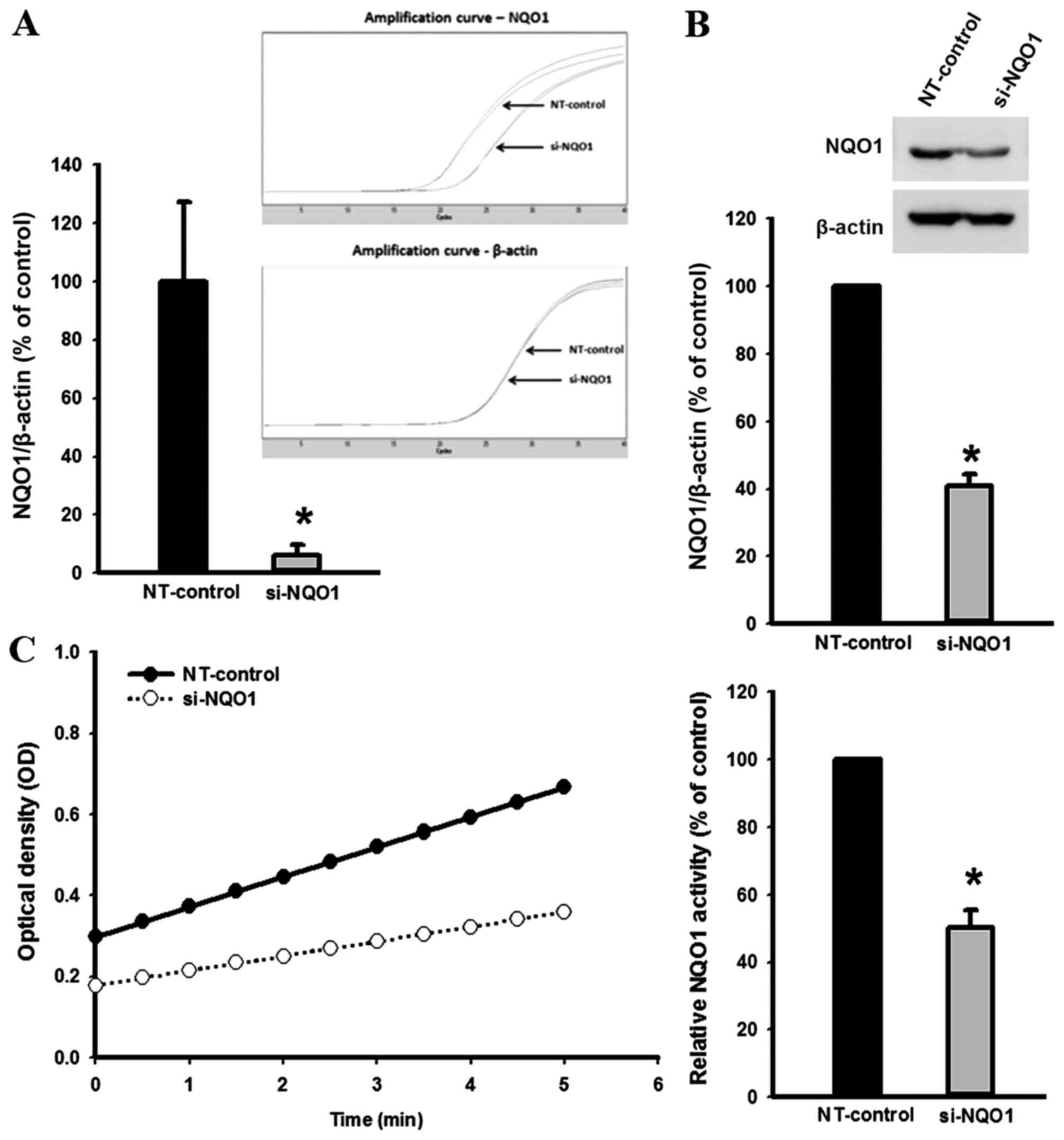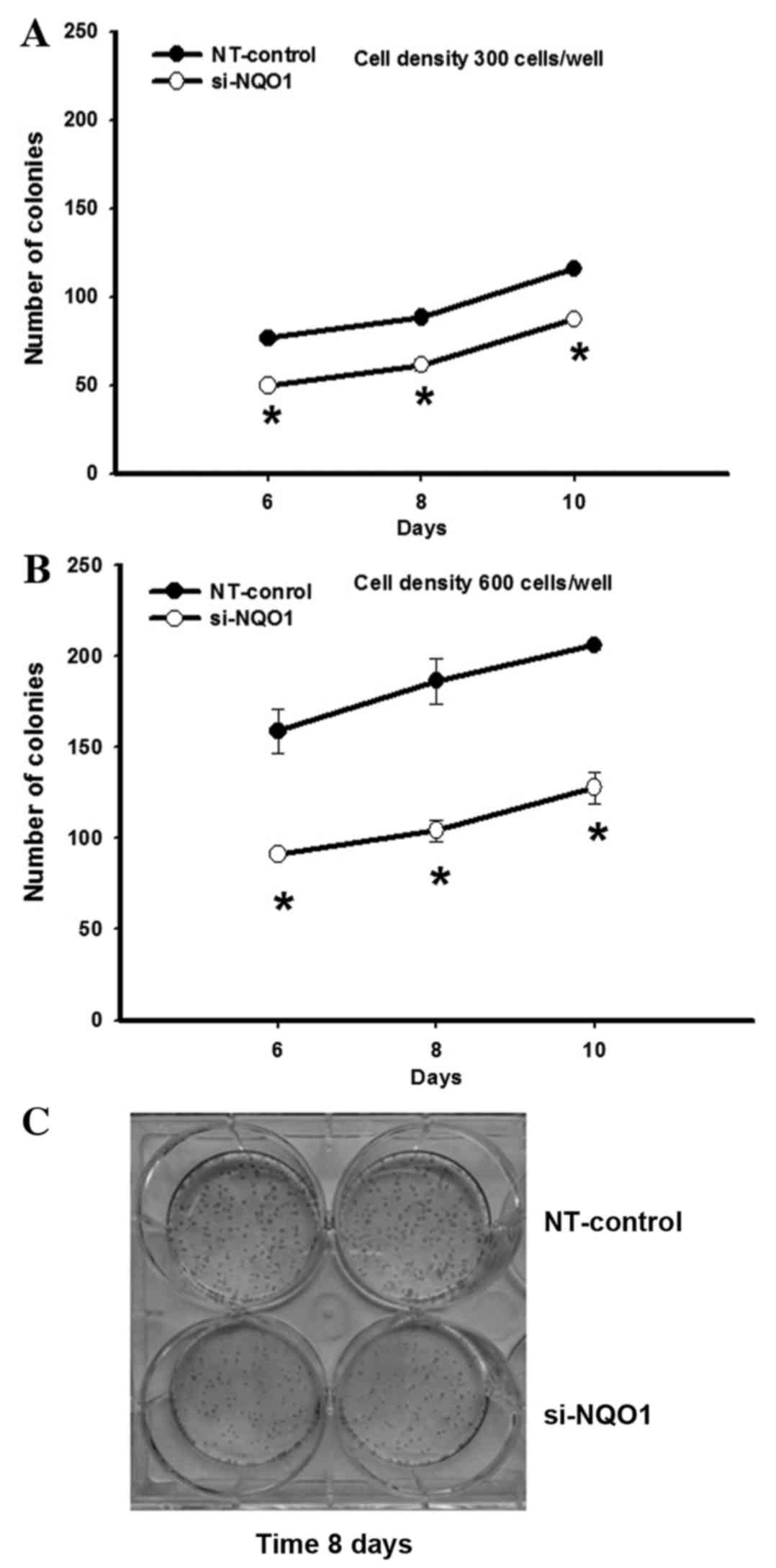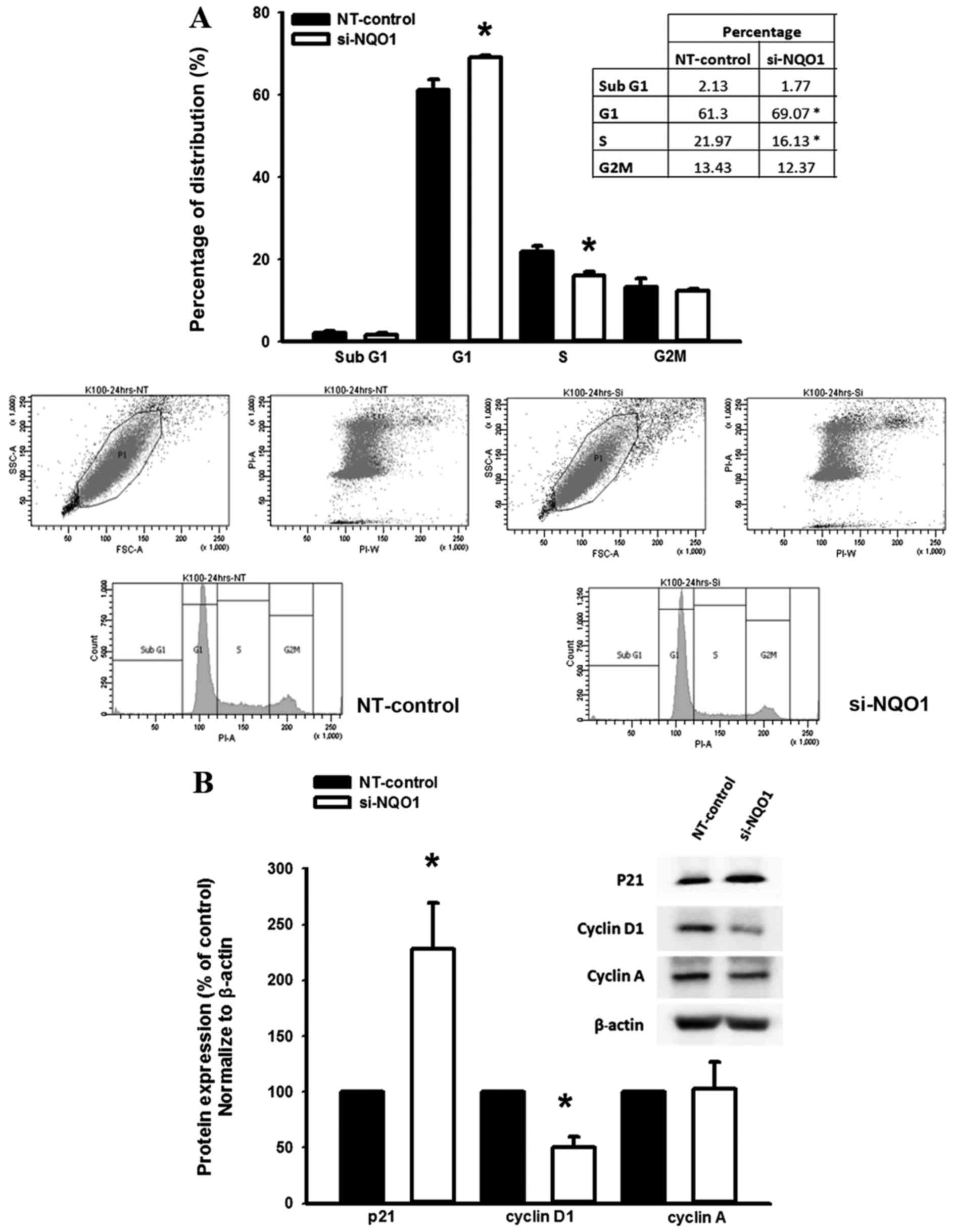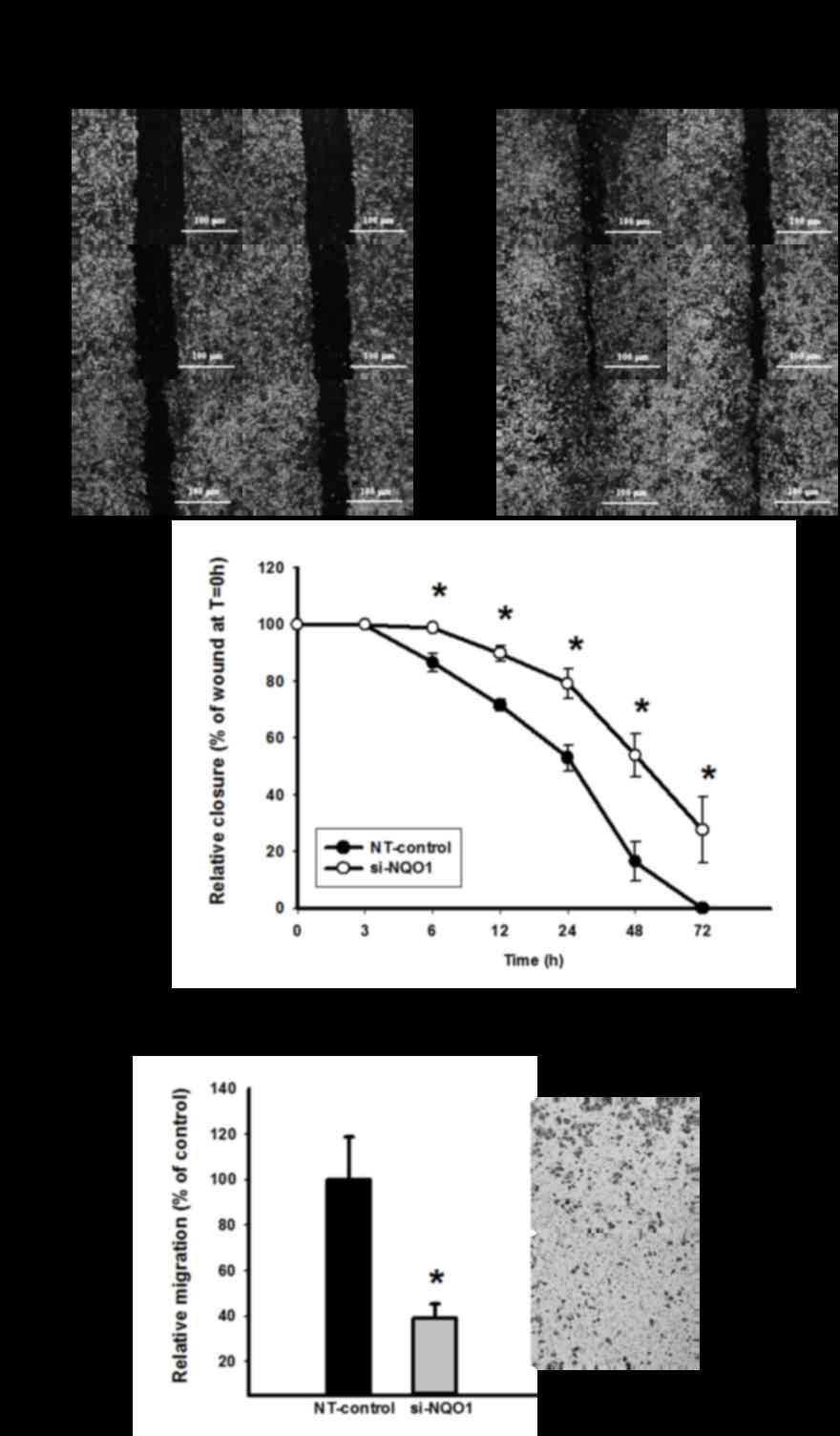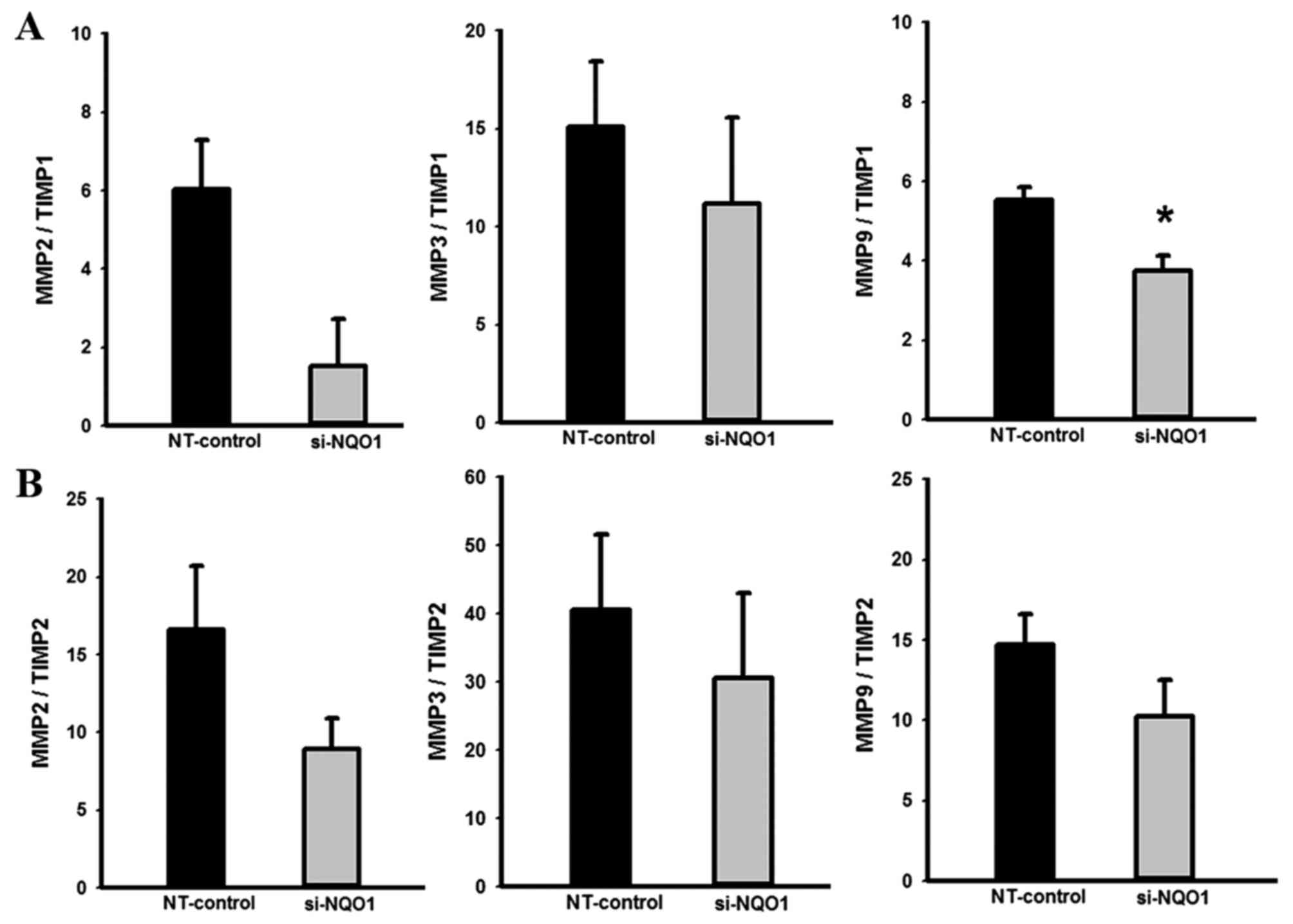|
1
|
Sripa B and Pairojkul C:
Cholangiocarcinoma: Lessons from Thailand. Curr Opin Gastroenterol.
24:349–356. 2008. View Article : Google Scholar : PubMed/NCBI
|
|
2
|
Khan SA, Davidson BR, Goldin RD, Heaton N,
Karani J, Pereira SP, Rosenberg WM, Tait P, Taylor-Robinson SD,
Thillainayagam AV, et al: Guidelines for the diagnosis and
treatment of cholangiocarcinoma: An update. Gut. 61:1657–1669.
2012. View Article : Google Scholar : PubMed/NCBI
|
|
3
|
Anderson CD, Pinson CW, Berlin J and Chari
RS: Diagnosis and treatment of cholangiocarcinoma. Oncologist.
9:43–57. 2004. View Article : Google Scholar : PubMed/NCBI
|
|
4
|
Patel T: Cholangiocarcinoma-controversies
and challenges. Nat Rev Gastroenterol Hepatol. 8:189–200. 2011.
View Article : Google Scholar : PubMed/NCBI
|
|
5
|
Buranrat B, Prawan A, Kukongviriyapan U,
Kongpetch S and Kukongviriyapan V: Dicoumarol enhances
gemcitabine-induced cytotoxicity in high NQO1-expressing
cholangiocarcinoma cells. World J Gastroenterol. 16:2362–2370.
2010. View Article : Google Scholar : PubMed/NCBI
|
|
6
|
Kongpetch S, Kukongviriyapan V, Prawan A,
Senggunprai L, Kukongviriyapan U and Buranrat B: Crucial role of
heme oxygenase-1 on the sensitivity of cholangiocarcinoma cells to
chemotherapeutic agents. PLoS One. 7:e349942012. View Article : Google Scholar : PubMed/NCBI
|
|
7
|
Samatiwat P, Prawan A, Senggunprai L and
Kukongviriyapan V: Repression of Nrf2 enhances antitumor effect of
5-fluorouracil and gemcitabine on cholangiocarcinoma cells. Naunyn
Schmiedebergs Arch Pharmacol. 388:601–612. 2015. View Article : Google Scholar : PubMed/NCBI
|
|
8
|
Zeekpudsa P, Kukongviriyapan V,
Senggunprai L, Sripa B and Prawan A: Suppression of NAD(P)H-quinone
oxidoreductase 1 enhanced the susceptibility of cholangiocarcinoma
cells to chemotherapeutic agents. J Exp Clin Cancer Res. 33:112014.
View Article : Google Scholar : PubMed/NCBI
|
|
9
|
Ross D, Kepa JK, Winski SL, Beall HD,
Anwar A and Siegel D: NAD(P)H:Quinone oxidoreductase 1 (NQO1):
Chemoprotection, bioactivation, gene regulation and genetic
polymorphisms. Chem Biol Interact. 129:77–97. 2000. View Article : Google Scholar : PubMed/NCBI
|
|
10
|
Dinkova-Kostova AT and Talalay P:
NAD(P)H:Quinone acceptor oxidoreductase 1 (NQO1), a multifunctional
antioxidant enzyme and exceptionally versatile cytoprotector. Arch
Biochem Biophys. 501:116–123. 2010. View Article : Google Scholar : PubMed/NCBI
|
|
11
|
Siegel D, Yan C and Ross D:
NAD(P)H:Quinone oxidoreductase 1 (NQO1) in the sensitivity and
resistance to antitumor quinones. Biochem Pharmacol. 83:1033–1040.
2012. View Article : Google Scholar : PubMed/NCBI
|
|
12
|
Basu S, Brown JE, Flannigan GM, Gill JH,
Loadman PM, Martin SW, Naylor B, Puri R, Scally AJ, Seargent JM, et
al: NAD(P)H:Quinone oxidoreductase-1 C609T polymorphism analysis in
human superficial bladder cancers: Relationship of genotype status
to NQO1 phenotype and clinical response to Mitomycin C. Int J
Oncol. 25:921–927. 2004.PubMed/NCBI
|
|
13
|
Cheng Y, Li J, Martinka M and Li G: The
expression of NAD(P)H:Quinone oxidoreductase 1 is increased along
with NF-kappaB p105/p50 in human cutaneous melanomas. Oncol Rep.
23:973–979. 2010.PubMed/NCBI
|
|
14
|
Cui X, Jin T, Wang X, Jin G, Li Z and Lin
L: NAD(P)H:Quinone oxidoreductase-1 overexpression predicts poor
prognosis in small cell lung cancer. Oncol Rep. 32:2589–2595.
2014.PubMed/NCBI
|
|
15
|
Kolesar JM, Pritchard SC, Kerr KM, Kim K,
Nicolson MC and McLeod H: Evaluation of NQO1 gene expression and
variant allele in human NSCLC tumors and matched normal lung
tissue. Int J Oncol. 21:1119–1124. 2002.PubMed/NCBI
|
|
16
|
Cui X, Li L, Yan G, Meng K, Lin Z, Nan Y,
Jin G and Li C: High expression of NQO1 is associated with poor
prognosis in serous ovarian carcinoma. BMC Cancer. 15:2442015.
View Article : Google Scholar : PubMed/NCBI
|
|
17
|
Buranrat B, Chau-in S, Prawan A, Puapairoj
A, Zeekpudsa P and Kukongviriyapan V: NQO1 expression correlates
with cholangiocarcinoma prognosis. Asian Pac J Cancer Prev. 13
Suppl:S131–S136. 2012.
|
|
18
|
Cullen JJ, Hinkhouse MM, Grady M, Gaut AW,
Liu J, Zhang YP, Weydert CJ, Domann FE and Oberley LW: Dicumarol
inhibition of NADPH: Quinone oxidoreductase induces growth
inhibition of pancreatic cancer via a superoxide-mediated
mechanism. Cancer Res. 63:5513–5520. 2003.PubMed/NCBI
|
|
19
|
Reigan P, Colucci MA, Siegel D, Chilloux
A, Moody CJ and Ross D: Development of indolequinone
mechanism-based inhibitors of NAD(P)H:Quinone oxidoreductase 1
(NQO1): NQO1 inhibition and growth inhibitory activity in human
pancreatic MIA PaCa-2 cancer cells. Biochemistry. 46:5941–5950.
2007. View Article : Google Scholar : PubMed/NCBI
|
|
20
|
Matsui Y, Watanabe J, Ding S, Nishizawa K,
Kajita Y, Ichioka K, Saito R, Kobayashi T, Ogawa O and Nishiyama H:
Dicoumarol enhances doxorubicin-induced cytotoxicity in p53
wild-type urothelial cancer cells through p38 activation. BJU Int.
105:558–564. 2010. View Article : Google Scholar : PubMed/NCBI
|
|
21
|
Wakai T, Shirai Y, Sakata J, Matsuda Y,
Korita PV, Takamura M, Ajioka Y and Hatakeyama K: Prognostic
significance of NQO1 expression in intrahepatic cholangiocarcinoma.
Int J Clin Exp Pathol. 4:363–370. 2011.PubMed/NCBI
|
|
22
|
Sripa B, Leungwattanawanit S, Nitta T,
Wongkham C, Bhudhisawasdi V, Puapairoj A, Sripa C and Miwa M:
Establishment and characterization of an opisthorchiasis-associated
cholangiocarcinoma cell line (KKU-100). World J Gastroenterol.
11:3392–3397. 2005. View Article : Google Scholar : PubMed/NCBI
|
|
23
|
Aneknan P, Kukongviriyapan V, Prawan A,
Kongpetch S, Sripa B and Senggunprai L: Luteolin arrests cell
cycling, induces apoptosis and inhibits the JAK/STAT3 pathway in
human cholangiocarcinoma cells. Asian Pac J Cancer Prev.
15:5071–5076. 2014. View Article : Google Scholar : PubMed/NCBI
|
|
24
|
Figueira RC, Gomes LR, Neto JS, Silva FC,
Silva ID and Sogayar MC: Correlation between MMPs and their
inhibitors in breast cancer tumor tissue specimens and in cell
lines with different metastatic potential. BMC Cancer. 9:202009.
View Article : Google Scholar : PubMed/NCBI
|
|
25
|
Kim HA, Yeo Y, Kim WU and Kim S: Phase 2
enzyme inducer sulphoraphane blocks matrix metalloproteinase
production in articular chondrocytes. Rheumatology (Oxford).
48:932–938. 2009. View Article : Google Scholar : PubMed/NCBI
|
|
26
|
Onodera M, Zen Y, Harada K, Sato Y, Ikeda
H, Itatsu K, Sato H, Ohta T, Asaka M and Nakanuma Y: Fascin is
involved in tumor necrosis factor-alpha-dependent production of
MMP9 in cholangiocarcinoma. Lab Invest. 89:1261–1274. 2009.
View Article : Google Scholar : PubMed/NCBI
|
|
27
|
Pardo A, Gibson K, Cisneros J, Richards
TJ, Yang Y, Becerril C, Yousem S, Herrera I, Ruiz V, Selman M and
Kaminski N: Up-regulation and profibrotic role of osteopontin in
human idiopathic pulmonary fibrosis. PLoS Med. 2:e2512005.
View Article : Google Scholar : PubMed/NCBI
|
|
28
|
Yang J, Zheng J, Wu L, Shi M, Zhang H,
Wang X, Xia N, Wang D, Liu X, Yao L, et al: NDRG2 ameliorates
hepatic fibrosis by inhibiting the TGF-β1/Smad pathway and altering
the MMP2/TIMP2 ratio in rats. PLoS One. 6:e277102011. View Article : Google Scholar : PubMed/NCBI
|
|
29
|
Groblewska M, Siewko M, Mroczko B and
Szmitkowski M: The role of matrix metalloproteinases (MMPs) and
their inhibitors (TIMPs) in the development of esophageal cancer.
Folia Histochem Cytobiol. 50:12–19. 2012. View Article : Google Scholar : PubMed/NCBI
|
|
30
|
Lewis A, Ough M, Li L, Hinkhouse MM,
Ritchie JM, Spitz DR and Cullen JJ: Treatment of pancreatic cancer
cells with dicumarol induces cytotoxicity and oxidative stress.
Clin Cancer Res. 10:4550–4558. 2004. View Article : Google Scholar : PubMed/NCBI
|
|
31
|
Alenzi FQ: Links between apoptosis,
proliferation and the cell cycle. Br J Biomed Sci. 61:99–102. 2004.
View Article : Google Scholar : PubMed/NCBI
|
|
32
|
Garate M, Wani AA and Li G: The
NAD(P)H:Quinone Oxidoreductase 1 induces cell cycle progression and
proliferation of melanoma cells. Free Radic Biol Med. 48:1601–1609.
2010. View Article : Google Scholar : PubMed/NCBI
|
|
33
|
Scott KA, Barnes J, Whitehead RC,
Stratford IJ and Nolan KA: Inhibitors of NQO1: Identification of
compounds more potent than dicoumarol without associated off-target
effects. Biochem Pharmacol. 81:355–363. 2011. View Article : Google Scholar : PubMed/NCBI
|
|
34
|
Golias CH, Charalabopoulos A and
Charalabopoulos K: Cell proliferation and cell cycle control: A
mini review. Int J Clin Pract. 58:1134–1141. 2004. View Article : Google Scholar : PubMed/NCBI
|
|
35
|
Lee SO, Chang YC, Whang K, Kim CH and Lee
IS: Role of NAD(P)H:Quinone oxidoreductase 1 on tumor necrosis
factor-alpha-induced migration of human vascular smooth muscle
cells. Cardiovasc Res. 76:331–339. 2007. View Article : Google Scholar : PubMed/NCBI
|
|
36
|
Friedl P and Wolf K: Tumour-cell invasion
and migration: Diversity and escape mechanisms. Nat Rev Cancer.
3:362–374. 2003. View
Article : Google Scholar : PubMed/NCBI
|



